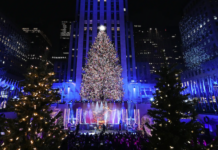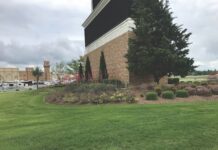
While getting our Christmas tree is usually a family event, this year I was simply too busy to come along. And it’s usually a no-brainer anyway. A lot just around the corner from our home typically has an abundance of beautiful, reasonably priced trees. We buy from them every year. But this year was different.
Hours passed after my family left to get the tree. They finally returned with an adequate but, to be honest, somewhat shabby tree. They reported something I had somehow missed despite the headlines: there’s a Christmas tree shortage this year. Not only was our usual supplier sold out, but so were many others. When my family finally found a tree, the seller wanted an exorbitant price. Luckily, my husband talked him down, but it was still over double what we usually pay.
So I wasn’t surprised when I read in my news feed: “The crisis unfolding in America’s tree capital.” The Dec. 22 Guardian article details how Oregon’s late June heat wave and summer of drought, which made national headlines, wiped out millions of trees across the state. Oregon is the nation’s largest producer of Christmas trees, and many tree farmers described it as the worst summer in memory.
According to the article: Larry Ryerson, co-owner of U Cut Christmas Tree Farm in Medford, OR, lost 4,500 trees. Dana Furrow, co-owner of Furrow Farm in Hillsboro, OR, lost thousands of seedlings, along with virtually all of its harvestable, u-cut Noble fir trees. Noble Mountain Tree Farm, a wholesale grower in Salem, OR, lost about 280,000 seedlings and more than 25% of its Noble fir trees were rendered unsalable.
But it wasn’t just Oregon. “Pennsylvania’s ‘Christmas Tree Capital of the World’ Is Facing a Shortage,” reported People magazine on Dec. 2. Indiana County Christmas Tree Growers Association President Gregg Van Horn said a seed shortage, fungus, and deer made the season especially tough. He predicted the smaller crop this year could drive prices up by as much as 30%.
In Oregon, some Christmas tree farmers have started preparing for a future of more weather extremes. Tom Norby, the president of the Oregon Christmas Tree Growers Association and owner of the Trout Creek Tree Farm, told The Guardian that such changes could include planting cover crops, or experimenting with growing types of trees more resistant to the heating climate. Norby’s own farm had minimal loss this past year, which he attributed to planting grass between each of his trees, which helped to keep moisture in the soil and block heat from radiating up to the trees, reported the magazine.
Even the National Christmas Tree planted in President’s Park underwent a species change for the first time, Turf reported in November. The National Park Service selected its first white fir to serve as the National Tree because its more resilient to needle cast disease. The previous tree, a Colorado blue spruce planted in October 2019, had succumbed to the fungus.
Yet, despite this year’s shortages, and future crop challenges, there are still trees for those who want them. “We’ve never run out of trees,” Michelle Keyser, director of communications for the Pennsylvania Christmas Tree Growers Association, told the York Daily Record. “It’s not like a toilet paper situation.”
In fact, U.S. Christmas tree purchasing has remained strong, with 75 % of U.S. households – or approximately 94 million homes – displaying Christmas trees in 2021, according to the American Christmas Tree Association’s 11th annual Christmas Tree NielsenIQ Survey. “We’re heartened to see that, even in the face of challenges posed by the pandemic, supply chain congestion, shipping container shortages, and extreme weather events, U.S. consumers have been able to continue their Christmas tree traditions in 2021,” said ACTA Executive Director Jami Warner.
Of the trees displayed, 84% are artificial and 16% are farm-grown. In an increase from 2020, nearly 6.5 million households that display a tree will display both a real and artificial tree this year, according to the survey.
Indeed, while my tree might be slightly imperfect this year, it’s ultimately still beautiful. And if the past few years of pandemic have held any value, it’s been lessons learned in acceptance, patience, and gratitude. Happy Holidays Turf Family!
Photo: Adobe Stock











![[VIDEO] Dickies®: Discover Workwear That’s Anything But Uniform](https://turfmagazine.com/wp-content/uploads/2023/06/1647663814-4b1a2a7742790a9b1e97a3b963477850192e1d6a9dfba9b07214a77bae25d6e3-d-218x150.jpg)































![[VIDEO] Dickies®: Discover Workwear That’s Anything But Uniform](https://turfmagazine.com/wp-content/uploads/2023/06/1647663814-4b1a2a7742790a9b1e97a3b963477850192e1d6a9dfba9b07214a77bae25d6e3-d-324x160.jpg)